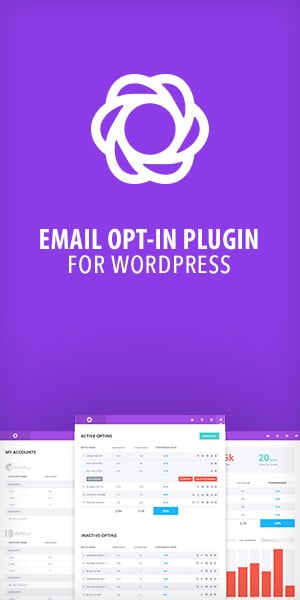professional writing templates are essential tools for boosting efficiency and consistency in creating documents. Studies show professionals can save up to 30% of writing time using templates. Whether drafting emails, proposals, or reports, templates provide a reliable structure while minimizing effort and errors. This post will explore how templates streamline the writing process, ensure clarity, and help maintain a polished, professional tone. Unlock a more efficient workflow and elevate the quality of your written communication.
The Benefits of Using Professional Writing Templates
Professional writing templates offer numerous advantages across various business and communication needs. They streamline processes, enhance quality, and maintain consistency. Let’s explore these benefits in detail.
Save Time and Boost Efficiency in Document Creation
Time is a precious resource in any professional setting. Professional writing templates allow you to draft documents swiftly without starting from scratch each time. Templates provide a structured format that significantly reduces the time spent on layout issues. With pre-defined sections and placeholders, the focus remains on content rather than format. This efficiency helps teams meet deadlines and manage workloads effectively.
- Reduces repetitive formatting tasks
- Enables faster completion of recurring documents
- Facilitates quick updates and revisions
Reduce Errors and Maintain Consistency Across Documents
Consistency is key to maintaining a professional image. Using templates minimizes the risk of errors by standardizing document structure and style. With a consistent template, variations in design and formatting are eliminated. This ensures that every document aligns with the brand’s voice and style guidelines, which enhances credibility and professionalism.
- Standardized headers and footers
- Uniform font styles and sizes
- Consistent tone and language
Enhance Professional Tone and Improve Communication Quality
Professional writing templates contribute to a polished and authoritative tone. They help craft messages that are clear and impactful. Templates guide the writing process, ensuring that essential elements are included, and unnecessary jargon is avoided. This clarity improves communication with clients, stakeholders, and team members, fostering better understanding and collaboration.
- Ensure clarity and focus on key messages
- Eliminate unnecessary jargon
- Enhance readability and engagement
How to Effectively Use Templates for Streamlined Writing
Effective use of templates requires a strategic approach. Customization and proper selection play crucial roles in aligning templates with brand and communication needs. Here’s how to leverage them effectively.
Customizing Templates to Fit Your Brand Guidelines
Every brand has unique identity markers. Customizing templates ensures alignment with these brand guidelines. Adjust elements like color schemes, logos, and typography to reflect your brand’s visual identity. This personalization helps convey a consistent brand message across all documents, reinforcing recognition and trust.
- Incorporate brand colors and logos
- Align typography with brand aesthetics
- Ensure template layout supports brand messaging
Choosing the Right Template for Each Professional Document Type
Different documents require different structures. Selecting the right template for each type ensures appropriateness and effectiveness. For example, a report template differs from a newsletter template. Understanding the purpose and audience of each document helps in choosing templates that best fit the communication style and objectives.
- Identify the document’s purpose and audience
- Match template structure to document type
- Evaluate templates for suitability and flexibility
Incorporating Templates into Collaborative Writing Workflows
Collaboration is a cornerstone of modern workflows. Incorporating templates into collaborative processes streamlines teamwork and improves output quality. Shared templates ensure that every team member works from the same page, literally and figuratively, facilitating seamless collaboration and reducing discrepancies in document creation.
- Ensure templates are accessible to all team members
- Use collaborative platforms to share and update templates
- Set guidelines for template usage in team projects
Best Practices for Maintaining and Updating Writing Templates
To ensure templates remain effective and relevant, they must be maintained and updated regularly. This practice keeps them aligned with evolving brand needs and technological advancements.
Regularly Reviewing Templates to Ensure Relevance and Modernity
Templates can quickly become outdated if not regularly reviewed. Regular evaluation ensures they stay aligned with current trends and business needs. Updates may include changes in technology, design preferences, or company branding. Keeping templates modern avoids dated designs and maintains a fresh and relevant appearance.
- Schedule regular template reviews
- Incorporate feedback from users
- Stay informed about new design trends
Organizing a Centralized Template Repository for Easy Access
Centralization of templates enhances accessibility and organization. A well-organized repository ensures that team members can quickly find and use the necessary templates. It reduces time spent searching and facilitates consistent use of approved templates across the organization.
- Create a centralized digital folder for templates
- Use clear naming conventions for easy identification
- Ensure access rights are appropriately managed
Training Teams on Best Practices for Template Utilization
Training is essential for maximizing the benefits of templates. Teams should understand how to use and customize templates effectively. This training promotes consistency, efficiency, and quality in document creation. It empowers team members to leverage templates fully, ensuring that every document meets professional standards.
- Conduct regular training sessions
- Provide clear guidelines and documentation
- Encourage feedback and continuous improvement
Conclusion
Professional writing templates save time, enhance efficiency, and streamline document creation. They ensure consistency, reduce errors, and align documents with a brand’s style and tone. Customization of templates helps reflect brand identity while selecting appropriate templates improves communication effectiveness. Centralized repositories and collaborative workflows simplify access and promote team consistency. Regular reviews, updates, and team training maintain template relevance and quality.
FAQ
What are the best practices for creating professional writing templates?
Establish a clear structure to maintain readability. Use consistent formatting, such as fonts and headings, to ensure uniformity. Incorporate placeholders for personalized information. Regularly update templates to keep them relevant and effective.
How can professional writing templates save time and ensure consistency?
Templates streamline the writing process by offering pre-set formats, thus reducing the time spent on formatting decisions. They ensure consistency by maintaining uniform style, tone, and structure across all documents, eliminating errors and enhancing professionalism.
Are there specific tools recommended for designing professional writing templates?
Tools like Microsoft Word and Google Docs offer convenient features for template design, including formatting options and easy sharing capabilities. Advanced tools like Adobe InDesign provide greater design flexibility for more complex needs.
Can professional writing templates be customized for different industries or purposes?
Absolutely, templates can be tailored to fit the specific needs and jargon of various industries. Customization allows businesses to address unique requirements, ensuring the templates are fit for purpose, whether for legal, medical, or marketing documents.
What common mistakes should I avoid when using professional writing templates?
Avoid using outdated or irrelevant templates that can mislead or confuse. Ensure all placeholders are filled before sending documents. Regularly review templates to remove any inconsistencies or errors.
How do professional writing templates enhance branding and communication?
They reinforce brand identity through consistent use of logos, colors, and messaging. Templates streamline communication, making it clear and professional, which strengthens brand perception and fosters trust with clients and partners.




